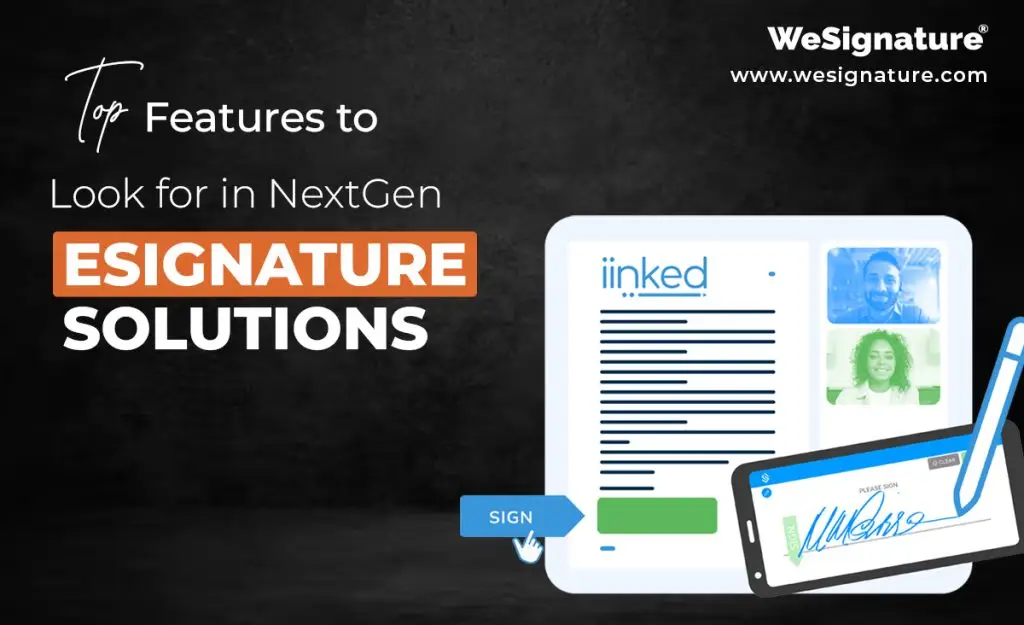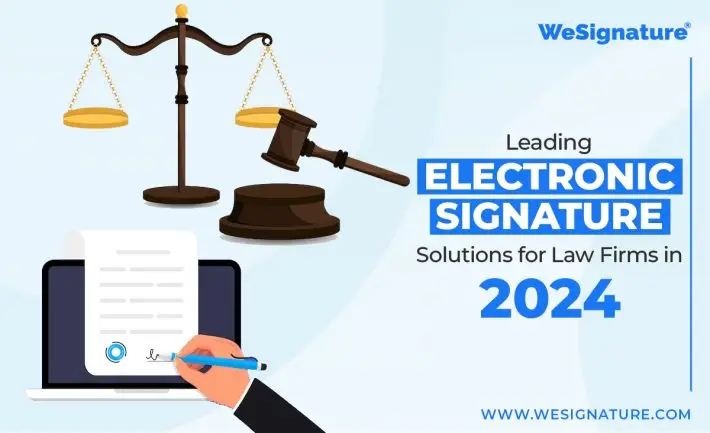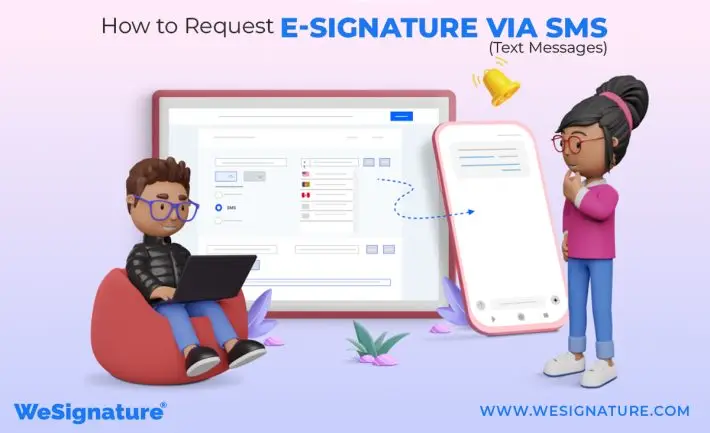Top 7 Features to Look for in NextGen eSignature Solutions

Electronic Signature plays a significant role in the existing business processes nowadays. They allow us to make the paperwork and signature process fast and easy. However, not all electronic signature software has the same quality. NextGen eSignature Solutions providers provide a set of intuitive tools augmenting the user experience for their clients.
One of the major distinctive features of NextGen e-signature is the possibility of signing a document from anywhere, at any time, and on any device.
This is particularly critical in our time-sensitive world when everyone is constantly on the go and may not have enough time to manually sign long documents.
Another significant characteristic is that they utilize the latest digital signature technology and extremely secure encryption and authentication technologies to protect signatures from being modified.
Other features to look for in NextGen eSignature solutions include the ability to integrate with other software and systems, such as document management systems, CRM software, and accounting software. This can help streamline your workflow and make your documents and data easier to manage.
Additionally, look for solutions that offer customizable workflows, so you can create a signing process that works best for your needs. With these features and more, NextGen eSignature solutions are revolutionizing the way we sign documents, making them faster, easier, and more secure than ever before.
Enhanced Security Features
NextGen e-signature systems come with enhanced security features to protect the validity and integrity of signed documents. These features are critical in protecting against unauthorized access, tampering, and fraud.
Here are two key security features for a NextGen e-signature solution.
Biometric Authentication
Among the most required approaches for the signer’s authentication is biometric identification. This approach uses distinctive physical traits such as fingerprints, facial recognition, or voice recognition to identify the validity of the signer.
Biometrics modification goes beyond the traditional methods of authentication, which use passwords or PINs. It reduces the possibility of anyone being able to share a password, guess a password, or steal one. As a highly secure and reliable alternative, a NextGen eSignature system with biometric authentication can be used to sign any document.
Advanced Encryption Protocols
Modernized eSignature solutions offer not only safe encryption but also other benefits. Such protocols will limit the possibility of unauthorized access or manipulation of signed papers.
In this method, the document is turned into a code unique to the concerned person. Protocols that use computer encryption techniques based on complex algorithms cannot be predicted. A secure eSignature system that uses cutting-edge encryption technologies ensures the dependability and security of transmitting and storing signed documents.
The NextGen eSignature system should include new safety measures. Biometric authentication, together with the use of modern encryption technologies, guarantees the security and authentication of signed documents. When choosing a NextGen eSignature solution, it is critical to evaluate these security features to ensure that the signature process is secure and dependable.
User-Friendly Interface
A user-friendly interface is integrated with most NextGen eSignature software systems and is of the highest priority when looking to invest in this type of software. Most importantly, it’s for businesses that have a hundred employees or consumers who request documents to be signed daily.
Intuitive Design
The interface that a user is supposed to use should be simple and it must be easy to navigate without any kind of misunderstanding. It needs to be simple so that minimal training or instructions are needed to use it.
Consistent design across all platforms should be the goal, no matter if the users are using desktop computers or mobile devices to contribute to an outstanding user experience. There are various ways of achieving an easy-to-use design, one approach might be to use a simple style with straightforward explanations and reduced clutter.
It is vital to make the interface customizable, enabling the users to personalize their commercialization process and streamline their workflows.
Mobile Optimization
Mobile devices have become a more widely used gadget, therefore, a NextGen eSignature solution needs to have a more mobile-friendly interface. An adaptive approach is preferred, the interface should handle various screen sizes and orientations. Moreover, it should be optimized for touch input. So, the users can sign it on the move.
A mobile-optimized interface should have a native look-and-feel of the application with all the capabilities of the desktop version including document editing, signing, and tracking. This allows users to view and sign documents from wherever they may be, at any time convenient to them, and via any device.
Simply, we should consider a user-friendly interface as one of the necessary features when searching for a NextGen eSignature solution. Intuitive design and mobile equipment can be the USPs that can have a huge push up the consumer experience, productivity, and adoption.
Integration Capabilities
The next-gen eSignature solutions must have powerful connectivity options that allow a smooth connection with current business tools. This is indispensable for companies that use many software solutions to carry out their business operations. undefined
API Access
API access must be the core functionality of the NextGen eSignature software you will be using. These APIs enable companies to integrate their eSignature solutions with other systems such as CRMs, ERPs, and human resources systems.
The fact of integration allows enterprises to have automated workflows, reduce manual efforts, and increase productivity. APIs of NextGen eSignature solutions are a tool for greater flexibility as businesses can integrate eSignature software with their existing systems.
They allow organizations to shape their integrations to fit their needs and requirements. APIs are a tool for businesses to obtain data in real time and make better decisions.
Third-Party Software Compatibility
NextGen eSignature solutions should be able to communicate with third-party software suppliers. This flexibility allows the system to seamlessly integrate with other software solutions. It also decreases the demand to change between several software systems which is not only time-consuming but also inefficient.
The compatibility with third-party software also allows businesses to select the software tools that adhere to their standard. It gives the option for enterprises to integrate with electronic signature software platforms they already utilize thereby lowering the necessity to adopt new software.
In conclusion, integration features play a crucial role in selecting an eSignature solution for the new generation. They enable businesses to integrate eSignature solutions into their other software applications, automate workflows, reduce human involvement in processes, and ultimately increase productivity. Enterprises must look for NextGen eSignature tools with API access and third-party integration abilities to ensure that their systems are compatible and development is easy.
Compliance and Legal Validity
Global Standards Adherence
Compatibility with global standards is an important factor to consider as NextGen eSignature technologies progress. That solution should conform to the standards and definitions as seen in the European Union’s eIDAS regulation, the Electronic Signatures laws for governing in the Global and National Commerce Act of the US, and the UETA law.
The solution should be compliant with ISO/IEC 27001, SOC 2, and HiPA to ensure that it is among the very highest security standards. This guarantee fosters trust between entities interested in using e-signature services. E-signatures become court-enforceable.
Audit Trails
Another essential criterion for NextGen eSignature solutions is keeping audit trails. An audit trail is a set of documentation that shows all the activities during the signing process: e.g., who signed it when they signed it, and where they signed it from.
The audit trail should also track any changes made to a document before signing. This ensures the document’s integrity is secured and detects any forgery.
As a conclusion, next-gen e-signature solutions with the features such as compliance with international standards and the ability to create audit trails are crucial to consider.
These traits ensure eSignatures are legally binding and maintain document integrity for court enforcement.
Scalability and Flexibility
Scalability and flexibility are crucial for selecting an eSign solution, ensuring business success by adapting to growth and changing needs.
Custom Branding Options
Customizing branding enables the scalability and flexibility of your signature solution for your brand. Of all this, you can maintain a single brand image through your documents and other communication media.
Choose a provider allowing branding incorporation into documents and emails.
Flexible Workflow Management
Another important aspect to consider is the ability to adapt workflow management. Your eSignature solution must handle various document workflows, from simple approvals to complex transactions.
Seek a solution with customizable workflows, integrable with existing systems.
For a successful NextGen ESig solution, scalability and flexibility are top priorities. A scalable solution saves time in document handling, enhancing efficiency as your business grows.
Innovative Technologies
Electronic signature solutions employ advanced technologies to enhance security, reliability, and efficiency. Two of the current technologies that are becoming more popular in forging eSignatures are Blockchain and Artificial Intelligence.
Blockchain Verification
Blockchain technology is the way of decentralized storing and sharing of information with the highest level of safety. It is impossible to counterfeit it, and it is transparent and unchangeable.
The verification using blockchain ensures that the digital signature is true and is without any tampering. This technology creates a special digital fingerprint for a given document and saves it on the blockchain.
The Hendrix algorithm verifies document integrity post-signature. This process is essential to the authenticity of both the document and the signature.
Artificial Intelligence
NextGen eSignature solutions use Artificial Intelligence (AI), another technology. AI algorithms analyze signatures and identify patterns that are unique to each signer and these algorithms hide the signatures. This helps to identify and block false signatures as well as ensures secure document storage. AI recognizes signer identity and automatically prints their signature, simplifying the process. This is a benefit as it saves time and at the same improves the signing process’s effectiveness.
In the end, the adoption of future-oriented technologies such as Blockchain Certification and Artificial Intelligence is a sign that the eSignature industry is evolving rapidly. These technologies enhance digital signatures’ security and efficiency, making them invaluable for businesses of all sizes.



